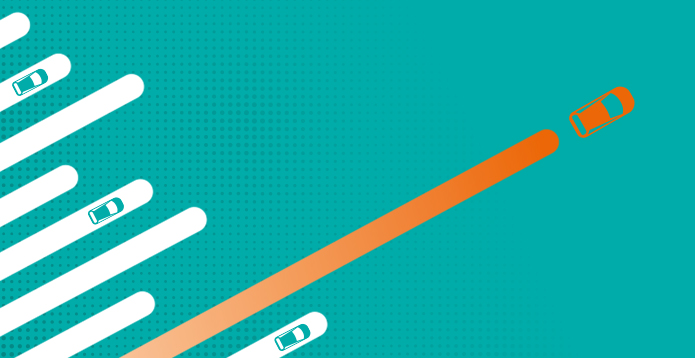The intellectual property (IP) rights underlying innovation in the automotive industry are intangible assets which can be bought, sold, licensed and mortgaged, their core value being the protection and enhancement of market position - just like tangible property. Like any other property, these assets will only hold value if they are in a good state of repair.

Cerys Wyn Davies
Partner
Protecting elements of new vehicles through IP registrations will be important irrespective of any shift from car ownership to shared mobility
As the sector evolves, the 'traditional' IP issues which have been present for decades will be just as important as newer issues involving data, software and artificial intelligence (AI). Protecting elements of new vehicles through IP registrations will be important irrespective of any shift from car ownership to shared mobility.
We can also expect to see a rise in litigation in this sector as more and more disruptors enter the market. Traditionally, the automotive industry has not been litigious. However, developments in the industry and the market entry of disruptors involved with connected technologies, have brought a shift in attitude to litigation. Technology companies are well-versed in litigation, and are unlikely to take the same informal approach to disputes which may have been taken by automotive original equipment manufacturers (OEMs).
The mobility sector is also likely to see an increase in trade secrets actions as employees take valuable confidential information, and sometimes more, with them when they leave.
IP in the mobility sector: the basics
Design rights and copyright
Iconic car designs get people talking: about the contours, lines and size and features, such as spoilers, headlights and callipers. Designs sell cars. They also help consumers to distinguish a vehicle from those of its competitors, acting almost as a trade mark or badge of origin.
Registered design rights can provide a monopoly of 25 years for both 2D and 3D designs. There is no need to show copying has occurred to enforce this right, and registration is inexpensive, quick and simple. Unregistered design rights can also provide protection against copying without any formalities for the shorter of 15 years from creation of the design or 10 years from the year of first marketing.

Cerys Wyn Davies
Partner
As vehicles evolve in line with new technologies and the way we use them changes, designing vehicles to embody these changes will be a costly but worthwhile investment
Design rights will not protect features that are not visible in normal use - for example, parts only visible during repair. They will also not protect parts which must fit or match the vehicle and are therefore dictated by their function.
Design drawings are also protectable against copying under copyright law. This is another useful IP tool for protecting 'artistic' and 'literary' works like user manuals, notes and even a vehicle's surface decoration. There is no requirement to register copyright, and these works will be owned by an employer where created by an employee in the course of their employment.
As vehicles evolve in line with new technologies and the way we use them changes, designing vehicles to embody these changes will be a costly but worthwhile investment. Electric vehicles have already evolved to accommodate batteries and to become lighter and more aerodynamic. Fully autonomous vehicles will no longer require drivers' seats, mirrors and steering wheels. Shared vehicles will likely see a shift in layout to accommodate more passengers and keep them safe.
Protecting the changing shape and design of vehicles will become increasingly important to safeguard that investment. Considering what suite of applications to make and how they should be presented with an experienced design lawyer will be an invaluable exercise. Maintaining dated design documents and notes will be a useful way of providing evidence of copyright ownership in designs.
Trade marks
Trade marks have always been closely associated with cars and these marks are some of the most recognisable and valuable trade marks in existence. They are household names and carry with them substantial brand value and reputation in respect of performance, safety and reliability.
In recent years, trade marks have become even more important, and manufacturers are looking to register trade marks to extend their scope of protection. For example, Jaguar Land Rover (JLR) recently sought to register a 3D trade mark for its iconic Defender model. However, the UK Intellectual Property Office (IPO) found that the shape was not sufficiently distinctive to warrant protection. Following this decision, Ineos Group has confirmed its intentions to launch The Grenadier, similar in appearance to the Defender, next year.
To be registered, trade marks must be capable of clear and precise representation, but provided this threshold is met they can include words, logos, slogans, colours, smells, shapes and sounds. Registered trade marks are a powerful right as they can last indefinitely. If renewal fees are paid, the mark is used and no-one successfully invalidates it, your mark can remain registered forever.
Unregistered trade marks and get-up are also valuable and capable of protection. You may have an action for passing off where you can demonstrate that:
- you have 'goodwill' in a mark – more than just reputation, requiring actual trade;
- there has been a misrepresentation or act of deception by a third party; and
- this has resulted, or is likely to result, in damage.
Patents
Patents protect new innovative products and processes. They encourage innovation and the development of new technologies by granting a legal monopoly in return for public disclosure of an invention. Patents granted can last for 20 years from the date of application, subject to payment of renewal fees - however, for those 20 years, the patent owner can exploit their invention to the exclusion of all others or can license the patent to a third party.

Cerys Wyn Davies
Partner
As the mobility sector faces a convergence of adjacent technologies ... this convergence will inevitably lead to the filing of an inordinate number of new patents and lead to patent disputes and licensing across the sector
Patents have traditionally been a valuable form of protection in the automotive sector. They can be used to protect anything from mechanical devices to computer software involving a technical function, such as controlling a vehicle or processing data.
As the mobility sector faces a convergence of adjacent technologies, particularly telecommunications and computing, this convergence will inevitably lead to the filing of an inordinate number of new patents and lead to patent disputes and licensing across the sector, in particular in respect of standard essential patents (SEPs).
Vehicle manufacturers have generally been unfamiliar with SEPs, while tech providers are well-versed and can gain substantial revenues merely by holding the relevant SEPs. The related risks need to be understood by vehicle manufacturers and, if necessary, appropriate licences secured.
The patent system is adapting to understand and recognise connected technologies, including AI and its applications, as well as the business models which flow from their use. There is certainly scope for further development of the patent system to support the protection of mobility as a service.
Trade secrets
In the automotive sector, trade secrets have traditionally been reserved for manufacturing processes and the supply chain. As consumers, quite literally, like to get under the bonnet, nothing of the vehicle itself has been able to be kept as a trade secret.
However, as we move into a more connected world, trade secrets can be an effective way of protecting information and data with the necessary quality of confidence. A trade secret strategy should be developed, categorising information to identify and safeguard the most valuable information; and confidentiality agreements and policies should be put in place with employees, suppliers and others to underpin confidentiality.
New issues and new opportunities
Electrification of vehicles
Although new car registrations fell by 44.4% in March 2020 due to Covid-19, electric vehicle registrations increased by 197.4% from March 2019, according to What Car magazine.
As the popularity of electric vehicles grows, manufacturers will continue to improve their battery technology and vehicle infrastructure. In-vehicle changes such as engine control systems and new filtering technologies will also create patenting opportunities. Traditional automotive businesses are reacting by increasing their investment in R&D to stay on top of electrification: in 2019, German car manufacturers and their supply chains filed 581 worldwide patents for electric vehicles, up 14% on 2018, according to figures from Accuracy Consulting.

Cerys Wyn Davies
Partner
The move to electric poses as many risks as it does opportunities for traditional supply chain businesses, with the need for many parts being eradicated. These businesses must adapt to survive
Legislative initiatives to cut emissions have led to developments in fuel efficiency and battery technology. The growth of electric vehicles and the 'smart grid' has also spawned the creation of vehicle-to-grid technology (V2G), which allows owners of electric vehicles to make money by selling unused power from the vehicle back to the grid to help support electricity supply during peak times. This new industry again requires innovation, resulting in patent opportunities and threats.
The move to electric poses as many risks as it does opportunities for traditional supply chain businesses, with the need for many parts being eradicated. These businesses must adapt to survive. As a consequence, the 20 largest automotive supply chain businesses filed over 300 patents last year, pre-empting a move to manufacturing electric car components.
Changes in vehicle structure, such as improvements in aerodynamics, will also result in exciting new registrable designs.
While investments in new technologies and designs are important, we should pay heed to the lessons learned from Dyson, which was forced to abandon its electric car project when it failed to find a buyer for patented designs showing unusually large wheels, a high vehicle floor, low roof and a small overhanging front and rear. While vehicle design will inevitably change, it must remain attractive to consumers to be competitive.
Connectivity
Connectivity refers to vehicles which effectively behave as a computer on wheels. The connected vehicle itself constantly collects and generates data about the driver and the journey. As the world becomes more connected, vehicles will be able to communicate with more points of connectivity, including the surrounding infrastructure and other vehicles. The vehicle's capacity to process data will grow accordingly.
Software has been an important part of our vehicles for many years, underpinning technologies such as infotainment, parking sensors and cruise control. As we move into a more connected world, on-board technology will become increasingly sophisticated. Traditional manufacturers will be faced with complex technical challenges, many of which will be overcome in collaboration with experts in these issues, working outside of the industry.
Arguably, the data collected by the vehicles is even more valuable than the underlying software, as it presents opportunities for every participant in the network to commercialise and monetise that data. Vehicles will generate such vast quantities of data that it will be important to identify what is of value, how it can be protected and how it can be shared. IP and compliance issues will need to be navigated.
Outside of the vehicle itself, infrastructure will also develop to communicate with and support the vehicle. These developments will also be worth protection.
Shared mobility
As shared mobility develops, cost effective design improvements will be crucial to making journeys safer, more comfortable and more accessible. Whether you're creating a vehicle, tracks, tramlines or even a water route, consideration will need to be given to how these can be best protected.
As we move away from car ownership towards a model of mobility as a service, these issues will remain just as pertinent, if not more so. The fundamental principles and value of IP protection and enforcement apply irrespective of the designs, technology and business models used.
Co-written by Katy Bourne of Pinsent Masons.




